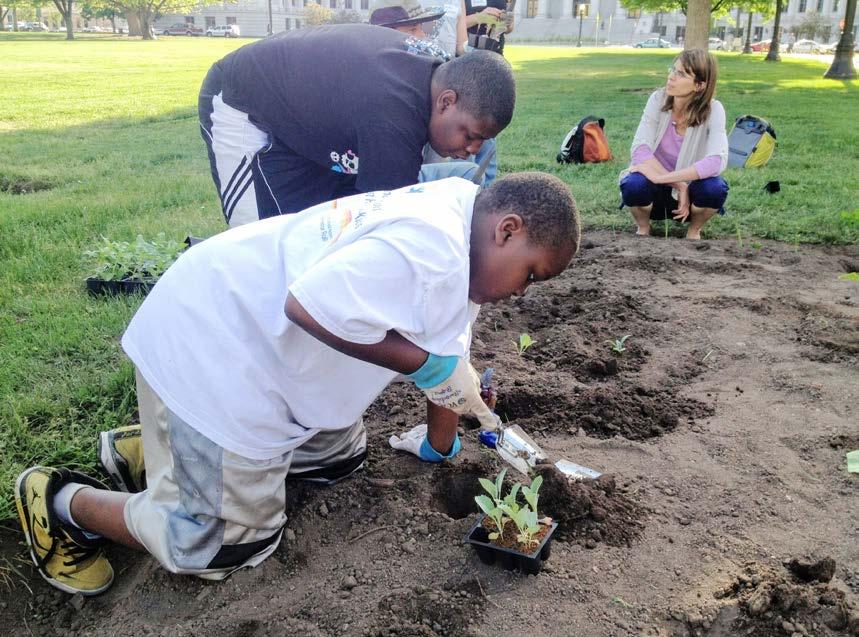
4 minute read
6 Tips for Recruiting and Retaining Volunteers
6
Tips for Recruiting and Retaining a Volunteer Workforce
By Volunteers for Outdoor Colorado (VOC)
Effective volunteer engagement is critical for many public-facing organizations: in addition to saving staff time and resources, a committed volunteer base allows you to engage the communities you serve more meaningfully and
effectively. Plus, when volunteers feel connected to your work, they become invested in the outcome and can often become some of your most fervent supporters and donors. But it can be challenging to know where to start, especially if your organization is in the early stages of developing volunteer programs. Follow these six tips to recruit and retain volunteers and you’ll be on your way to increasing your organization’s reach and impact!
1. Start with a goal.
You know you need volunteers – but do you know how many, or what kind? Before you start planning how to recruit volunteers, determine who you need and what you need them for. Consider your organization’s overall goals as well as your project-specific needs when setting goals. Perhaps your organization wants to increase youth and family involvement in your programs, but you also need volunteers to help with a physically demanding park improvement project. In this case, you have two goals requiring different volunteers – and thus different recruitment strategies. Setting these goals ahead of time will help you track your progress and plan your outreach more efficiently.
2. Meet prospective volunteers where they are.
Now that you know who you’re looking for, consider where you’ll find them. By understanding your prospective volunteers’ habits and motivations, you can tailor your recruitment to reach the volunteers you’re looking for with a mix of print materials, online outreach, and face-to-face interactions. Consider the places and websites they frequent; the partners they’re already connected with; and the other commitments competing for their time. To reach families, for example, you may want to partner with schools and libraries while being conscious of how school and sports schedules may affect your efforts.
3, Share what’s in it for them.
While many volunteers are altruistically motivated, they need more than just an inspiring mission. To get volunteers in the door – and, more importantly, keep them engaged – individuals need roles that suit them and their interests, and they need to know that their time matters. Throughout your recruitment efforts, make it clear how volunteers’ work will fit into the ‘big picture’ of your mission and answer, “What’s in it for me?”. Explain what they will gain from their time, whether that’s new skills, new friends, or simply a fun experience.
4. Diversify your volunteer opportunities.
After you feel confident meeting your project-specific goals, you may want to consider expanding the ways that people can volunteer with you. Providing different opportunities opens the door to different types of people – with different skills and abilities – to become involved with your organization. It also provides new ways for existing volunteers to participate, deepening their engagement as they learn about other aspects of your work. Data entry, administrative support, and photography can be simple ways to expand your volunteer opportunities.
5. Say thank you and stay connected.
The easiest way to recruit volunteers is to keep the ones you already have. Make your volunteers feel appreciated from the moment they consider signing up to long after they’ve completed their work. It’s important to always thank them and to stay connected, even at times when no volunteer opportunities may be available. You can highlight volunteers’ efforts in your newsletters and social media; create a Facebook group or other place for your volunteers to connect; or provide tangible incentives for increased involvement (these don’t have to be expensive; a special sticker or simply adding their name to the ‘100 Volunteer Hours Club’ can be effective!).
6. Recruit, Recognize, Retain… and Report
The not-so-secret weapon behind your volunteer engagement efforts is data. Whether you use an online spreadsheet or a more robust platform, you’ll want to track your volunteers’ involvement including contact information, skills and interests, and past participation. You may also want to collect how they heard about your organization and feedback about their experience. You can then use these data points to tailor your communications with volunteers and contact them directly about opportunities that may interest them; adjust your outreach methods; and continually improve the volunteer experience. Finally, it’s important to remember that volunteer engagement is not a one-anddone task. It is a process of building mutually beneficial relationships with individuals, groups, and communities. While it can take time, fostering an engaged volunteer workforce is worth the effort. It can free up staff time, bring new skills into your organization, increase your impact and, ultimately, more deeply connect your organization to the people you serve. Volunteers for Outdoor Colorado (VOC) was founded in 1984 to motivate and enable people to become active stewards of Colorado’s natural resources. VOC’s award-winning volunteer, youth, and training programs have engaged more than 125,000 volunteers in over 1,000 projects. Learn more at voc.org.









